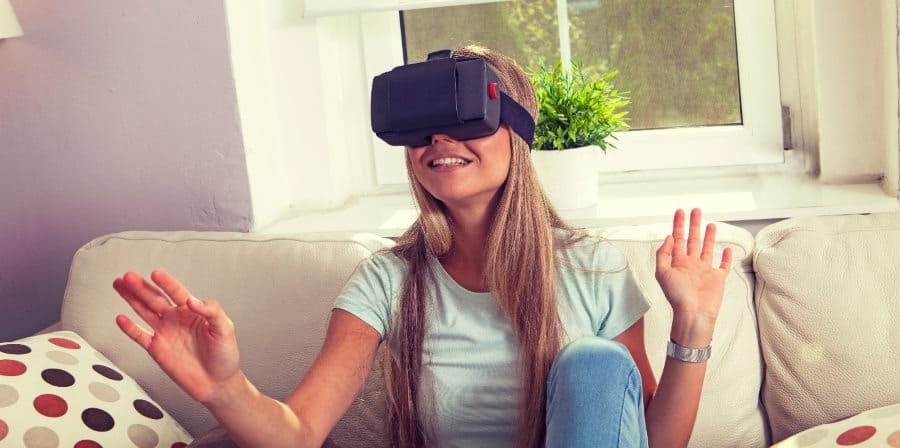Virtual Reality (not to be confused with “Augmented Reality ”) is the flashy buzzword going around these days. But what do you see in VR? Is it like putting on 3D glasses?
Simply put: VR is very similar to 3D, but contains some noticeable differences. Real-life tracking, and computer generated graphics make VR stand out from 3D. Read here for a further explanation by members of the VR community.

In this article I will be explaining the basics of how VR works in plain and simple terms. If you want to know things in greater detail, do check out the posts I’ve linked in this article!
HOW VR WORKS
You immerse yourself into the realm of virtual reality by putting on a headset. These are slightly weighty goggles that project to you your new reality. Some companies have designed dedicated headsets for their companion hardware. From PC to the PS4, there are many VR options to choose from! You’ll find great standalone gear to choose from as well!
Some headsets are remotely linked to one or more devices known as “base stations.” Base stations track your movement in real-time. Other headsets use cameras. In essence: these gadgets allow the way you move in reality to be replicated in the VR world. It sounds just as cool as it is!
Check out this article to learn how the magic happens!
WHAT YOU’RE DOING IN VR
When you don the futuristic headset of VR, you see a world that is not your own (although some games let you conquer this world). What this means is that you see everything almost exactly like how you would in real life.
If you’re in an open-world game, you would be able to see the land as far as your eye can render. If you’re watching a 3D movie, you’ll feel right in the middle of the plot. Even watching regular videos on VR makes you feel like you’re seeing it in a personal theatre. Immersion is what makes VR sell!
Once you have your VR controllers connected, you can now interact with your new reality. I don’t just mean with inanimate objects, but with other players too! Have a look at this Youtube video to see what I mean.
Your controllers are your limbs in VR, so take good care of them!
In most games you’ll see your character’s body move exactly as you move yours in reality. Grab and throw objects, look around, fire guns, cut the wires of a bomb, pet a dog, the possibilities are practically limitless!
Don’t underestimate the simple act of exploring in VR. There is a completely different feel to moving in one reality, while actually being in another. The joysticks of your controllers help you navigate the virtual world (as you would move your character in a regular game).
You can turn your head as far as the human anatomy allows you, and still see everything. For the best experience, you’ll want to make sure your VR headset matches your IPD (interpupillary distance).
WHAT YOU’RE SEEING IN VR
When it comes to the videography of VR, some people tend to assume that using VR is the same as watching a 360° video. This isn’t actually the case. You’ll find that the crucial element of VR lies in the depth of field it provides, and not just dome-like view of a 360° video.
Comparing VR to 3D yields greater similarity. VR is, in fact, a more personalized 3D experience.
Read more about the differences between VR, 3D, and 360° videos here.
Another common confusion regarding VR is whether you can watch regular 2D media on it. The truth is that you can watch in 2D in VR. Although you’re not having your headset fully utilized in 2D, simply have those movies downloaded and ready to play!
There is unsurprisingly less confusion regarding 3D movies in VR. You can watch 3D movies in VR in a number of ways. Read about them in this article.
IS VR 4D?
Let’s first talk about the basic definitions.
3D refers to a visionary experience. That is to say, “you can see everything from three-dimensional angles.”
4D refers to a sensory experience, in addition to having an extended 3D experience. What this means is that you get to feel just as much as you see. For example: water spraying, ground moving, winds blowing.
VR on its own is not a 4D experience. The vibrations from the controllers and the headset could count it towards being 4D, but this is not a big enough deal to be widely accepted. The VR community explains these aspects here.
But hey, if you can get somebody to hold up a fan and spray some water on you at the right times, then why not make it 4D?
So now that you’ve been brought up to speed about the wonders of VR basics, I look forward to seeing you join our futuristic community!
